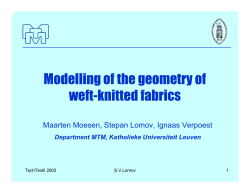
operando
Introduction The characterisation of catalyst in reaction condition is widely used at laboratory scale and provides useful information that generally leads to the proposition of reaction mechanism. Infrared spectroscopy is very powerful due to the high sensibility to adsorbed species detection. Both transmission and DRIFT modes are involved and generally the specific geometry of the sample in transmission mode (wafer of catalyst) appears far from ideal plug flow reactor conditions. However few studies deal with the optimisation of this category of reactors [1]. The present study combines response time distribution measurements and modelling of different configuration of the geometry of the reactor. In particular, two types of reactors were compared with two geometries: a circular pellet and a square pellet with specific sample holder. Experimental The -alumina obtained by sol–gel method using alkoxide precursors was used for the pellet. The catalyst was loaded in the IR cell and connected to an automatic setup for the realisation of a transient pulse of N2O in helium during 2 seconds at 25°C, 10 mL/min and atmospheric pressure. Quadruple mass spectrometer was connected at the entrance of the cell or at the exit of the cell. Modelling of the cell was performed by means of Comsol software, version 3.5a with Chemical Engineering Module, and version 4.0, using 3D geometry. Gas flow was treated first by steadystate incompressible Navier-Stokes equations, followed by transient modelling of convection and diffusion. Results Two configuration of the sample holder were used in this study, Figure 1. The circular geometry is similar to other operando reactors using FTIR transmission spectroscopy described in the literature [2]. A cylindrical body made of stainless steel maintained a cylindrical wafer of catalyst, 16 mm of diameter, about 40-60 μm of thickness. Because of the symmetry of the reactor, only ¼ of the actual cell was represented. Alternately, we developed a square geometry for the Figure 1: Two configurations of sample holder and meshing: sample holder. In this case, the selfCircular and square geometry supported sample was square wafer Circular geometry 0,030 Square geometry 0,03 Inlet Inlet 0,025 Experimental outlet 0,020 Theoretical outlet 0,015 0,010 0,005 N2O concentration (mol/m3) A. Carias Henriquez, S. Pietrzyk, F. Dhainaut, C.Dujardin* Université Lille Nord de France, UCCS UMR CNRS 8181, 59650 Villeneuve d’Ascq, France *christophe.dujardin@univ-lille1.fr of catalyst with 12 mm edge. Because of the symmetry of the reactor, ½ of the wafer actual cell was represented for the modelling. The Reynolds number was calculated to determine the character of flow in the cell, by taking into account the places where the gas velocities were highest (entry and exit holes). These values are lower than 1, therefore the consideration of laminar flow remains valid for both geometries. Profiles of gas velocity obtained from modelling with module CFD clearly discriminated both geometries. The distribution of gas velocity near the circular wafer suggested that the construction of the circular reactor is far from ideal. By contrast, this deviation was corrected when a square geometry was used. The transient pulses of N2O was modelled and compared to the experimental signals (Figure 2). As observed, a good agreement between experimental signals and theoretical signals was obtained and was related with the volume of the sample holder, geometry and dispersion of the gas into the cell. The existence of dead volumes was highlighted by the observation of tailing peak in the experimental and modelled curves. This effect was a little bit more marked in the circular geometry, which can be related to the presence of complex hydrodynamic phenomena. The relative importance of dead volumes was also evaluated and suggested that the inlet and outlet of square geometry could be improved. Further modelling of residence time distribution would be discussed in order to qualify both geometries of the sample holder. Finally, the consequences of the geometry to the amount of adsorbed species would be examined for further applications in operando IR spectroscopy. N2O concentration (mol/m3) How to optimise operando reactors? Modelling of IR cell devoted to in situ and operando characterisation of catalyst 0,025 Experimental outlet Theoretical outlet 0,02 0,015 0,01 0,005 0,000 0 0 20 40 60 Time (s) 80 100 120 0 20 40 60 Time (s) 80 100 120 Figure 2: Modelling of transient pulse for two configurations of sample holder: Circular wafer and square geometry Conclusion The design of operando reactors is a key point for further development of infrared spectroscopy to kinetic measurements. The comparison of two geometries clearly underlines that a deviation of gas velocity is evidenced near the catalyst surface when classical circular geometry is used. The new design with square geometry leads to a significant improvement with homogeneous gas velocity for example. References 1. S. Pietrzyk A. Y. Khodakov, C. Dujardin, COMSOL conferences (2007) Grenoble 2. T. Lesage et al., Top. Catal. 30–31 (2004) 31.
© Copyright 2025





















